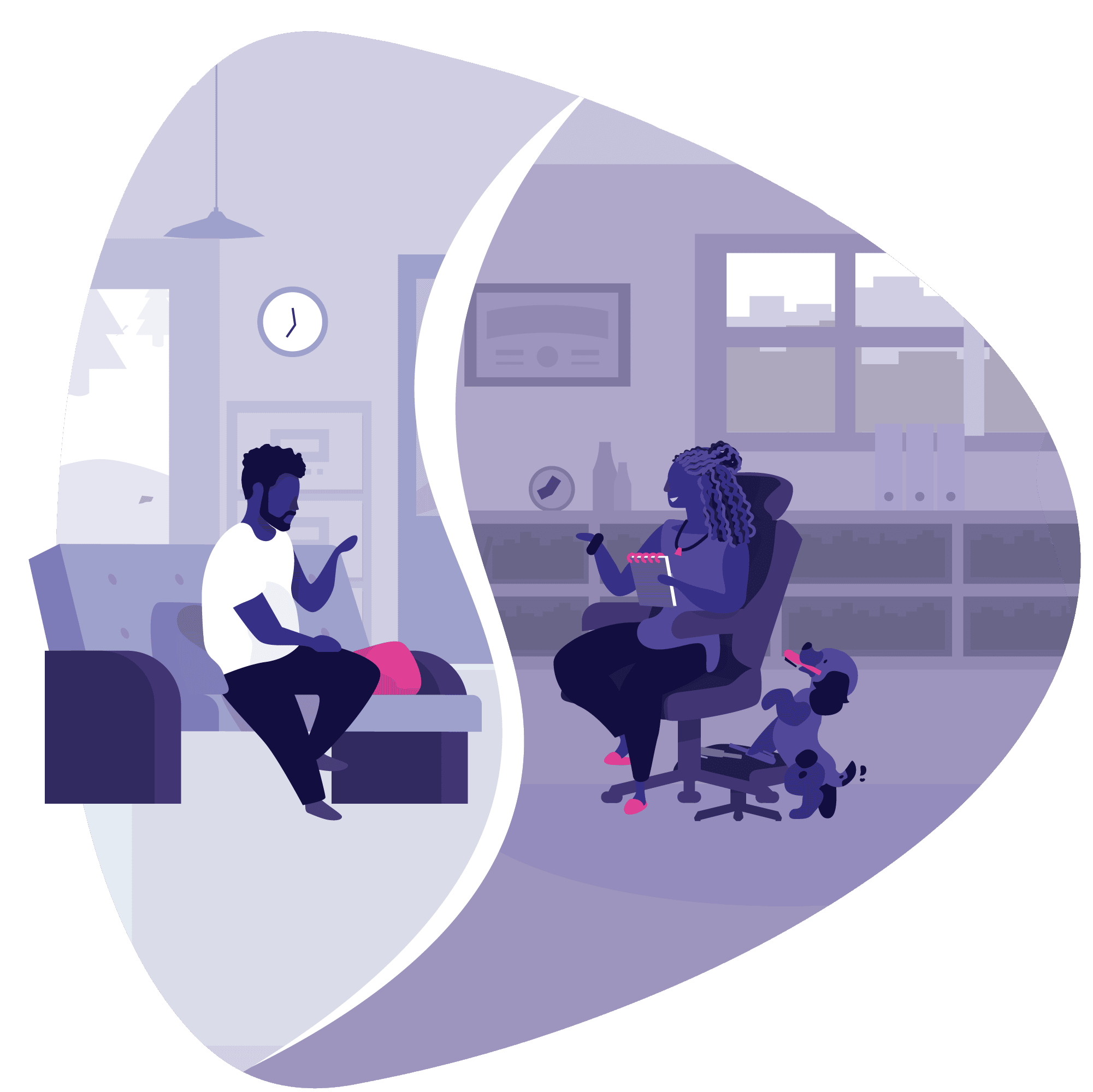Quick links
Telehealth bridges care gaps
Telemedicine use among Americans
Rules and regulations related to telehealth
Telehealth satisfaction by numbers
How Iris Telehealth can help
During the rise of the COVID-19 pandemic, many providers, organizations, and patients turned to telehealth as a way to deliver and receive mental health services. In fact, by 2022, more than 1 in 5 Americans were using telehealth to receive care.
But is telehealth here to stay for the long haul? We think so. Telehealth has become the new normal and will continue to impact the behavioral health space with its ability to provide effective, quality care and create greater access for those who need mental health treatment. Keep reading to learn about the impact of telehealth, new rules and regulations making telehealth available to more people, and how telehealth has positioned itself as a mainstay in healthcare.
Telehealth bridges care gaps
One of the central reasons we believe telehealth is here to stay is because of its ability to improve access to care for people facing transportation and financial challenges or those encountering obstacles related to stigma and race. Expanded access is especially impactful for patients living in rural areas as telehealth allows them to connect with high-quality care even if there’s not a provider living in their geographical region. For those from different cultural backgrounds, telehealth can reduce discomfort and increase understanding of cultural nuances.
Telehealth enables organizations to draw from a large provider pool, allowing patients to connect with providers who address specialized needs, speak the same language, or have similar cultural experiences. This connection through telehealth offers a better understanding between the patient and provider, leading to better health outcomes.
Telemedicine use among Americans
Another positive sign of telehealth’s staying power is recent data on usage and the benefits it brings to specific populations. No matter what type of provider and where individuals are located, telepsychiatry meets Americans right where they are.
Patient populations who stand to benefit the most from telehealth include:
- Older adults: Many older adults experience barriers to access, have unnoticed behavioral health conditions, or other medical conditions that might need attention on top of their mental health. Among adults aged 50-80, telehealth usage jumped from 4% in May 2019 to 26% in June 2020.
- LGBTQIA+: LBGTQIA+ adults and youth can be impacted by discrimination in healthcare settings. The offering of remote care delivery can help them receive non-discriminatory care from a safe location. Telehealth offers privacy and security for members of the LGBTQIA+ community who might be faced with stigma. With 60% of LGBTQIA+ youth reporting that they wanted to receive mental health care in 2020, telehealth can be one solution to ensure they receive the care and support they need.
- Rural Americans: Rural Americans can face stigma as well, especially when there can be a lack of anonymity in their communities. With one-third of Americans worrying about others judging them for seeking mental health treatment, telepsychiatry offers an opportunity for rural communities to receive the same level of care as a metropolitan area without the stigma involved.
- Mothers: According to a recent survey from the Kaiser Family Foundation (KFF), 60% of women had telemedicine visits in the past two years. Women are more likely to use telehealth in a post-COVID world. The convenience of virtual care can be beneficial for women who are caregivers, or for those who reside in a health professional shortage area (HPSA).
Rules and regulations related to telehealth
Recently, telehealth has been recognized at a policy level – underscoring how crucial this platform is to people’s well-being. After COVID-19 started impacting communities across the country, telehealth restrictions loosened. Millions of patients could meet with their healthcare providers via a smartphone or another digital device. And this level of access has continued.
New bills from the executive branch could point to telehealth usage expanding. The latest Omnibus Bill that President Biden recently signed will put at least $10 billion into behavioral health in 2023. The bill will extend telehealth flexibilities for Medicare beneficiaries, buprenorphine deregulation, and put more money towards expanding workforce development programs in the behavioral health space.
With the healthcare landscape changing at a policy level in a post-pandemic world, the future of telehealth is likely to create impactful change in access and delivery of healthcare.
Telehealth satisfaction by numbers
By the numbers, patients and providers are widely satisfied with the benefits and convenience that telehealth delivers. Here are a few key ways telehealth is making an impact:
- Patient satisfaction: One of the largest benefits of telepsychiatry is patient satisfaction and experience. A new study about patient satisfaction showed that 63% of patients had their medical and social needs met by their providers over telehealth. These results indicate that patients are satisfied with the care they receive when using telehealth.
- Convenience: Another survey conducted by America’s Health Insurance Plans (AHIP) says that Americans value the convenience associated with telehealth. The results noted that 69% of Americans prefer telehealth services over in-person care for convenience.
- Provider satisfaction: Telehealth offers excellent value to providers. The American Medical Association (AMA) states that providers have enjoyed using telehealth, as 85% of providers agreed that it increased the timeliness of care, and 70% were even motivated to increase telehealth use for their patients.
- Accessibility: Telehealth serves as a bridge between patients and providers. According to a study conducted by McKinsey & Company, providers have been seeing 50 to 175 times more patients via telehealth than before the pandemic. More providers using telehealth means more patients can be seen. Telehealth benefits both patients and providers by allowing more patients to get through the door without missing their appointments.
- Health outcomes: Telehealth opens communication between providers and patients, leading to better health outcomes. This communication can help patients take better care of themselves and be more proactive with their health. Medical Economics shares that 93% of patients would use telemedicine to manage prescriptions and 91% of patients would use telemedicine to adhere to appointments.
How Iris Telehealth can help
Iris Telehealth can help you meet your organization’s behavioral health goals by making the implementation of a telepsychiatry solution as easy as possible. We believe integral to the future of behavioral health, offering many benefits for your organization, patients, and clinicians. Contact us today to see how our telepsychiatry services can help your team provide high-quality care for your patients.



